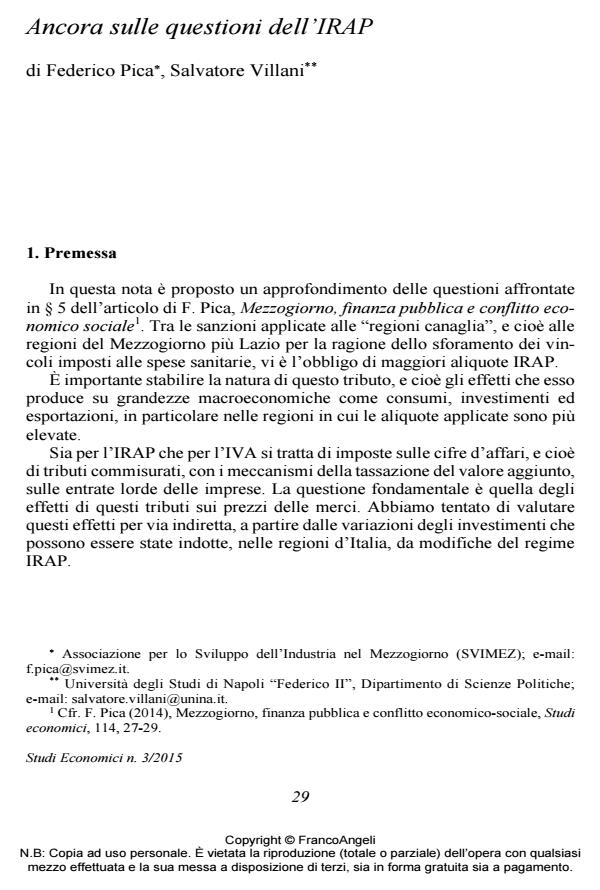Again on the issues of IRAP
Journal title STUDI ECONOMICI
Author/s Federico Pica, Salvatore Villani
Publishing Year 2016 Issue 2015/117
Language Italian Pages 43 P. 29-71 File size 434 KB
DOI 10.3280/STE2015-117003
DOI is like a bar code for intellectual property: to have more infomation
click here
Below, you can see the article first page
If you want to buy this article in PDF format, you can do it, following the instructions to buy download credits

FrancoAngeli is member of Publishers International Linking Association, Inc (PILA), a not-for-profit association which run the CrossRef service enabling links to and from online scholarly content.
This paper offer a more in depth investigation on the issue of the nature and incidence of IRAP (the local business tax applied in Italy), namely on the effects that this tax produces on certain macroeconomic variables – such as consumption, investment and exports – in the regions where the rates applied are higher. In particular, it shows the results of a territorial and sectorial empirical analysis of the trend in investments accounted on the balance sheet by firms during the period 2006-2014. The analysis of the data of tangible assets, amortization and some balance sheet indicators of financial structure, profitability and tax incidence, suitably disaggregated by region and by sector, provides useful evidence in favor of the hypothesis of the forward shifting of this tax and its adverse impact on business investment in so-called “Scoundrel Regions” as well as in all regions which have deliberated pejorative changes in the ordinary tax rate.
Keywords: Tax incidence; local business taxes; value added tax; effects of taxation on business investment; regional economic development.
Jel codes: H22, H25, H32, H71, R11
Federico Pica, Salvatore Villani, Ancora sulle questioni dell’IRAP in "STUDI ECONOMICI " 117/2015, pp 29-71, DOI: 10.3280/STE2015-117003